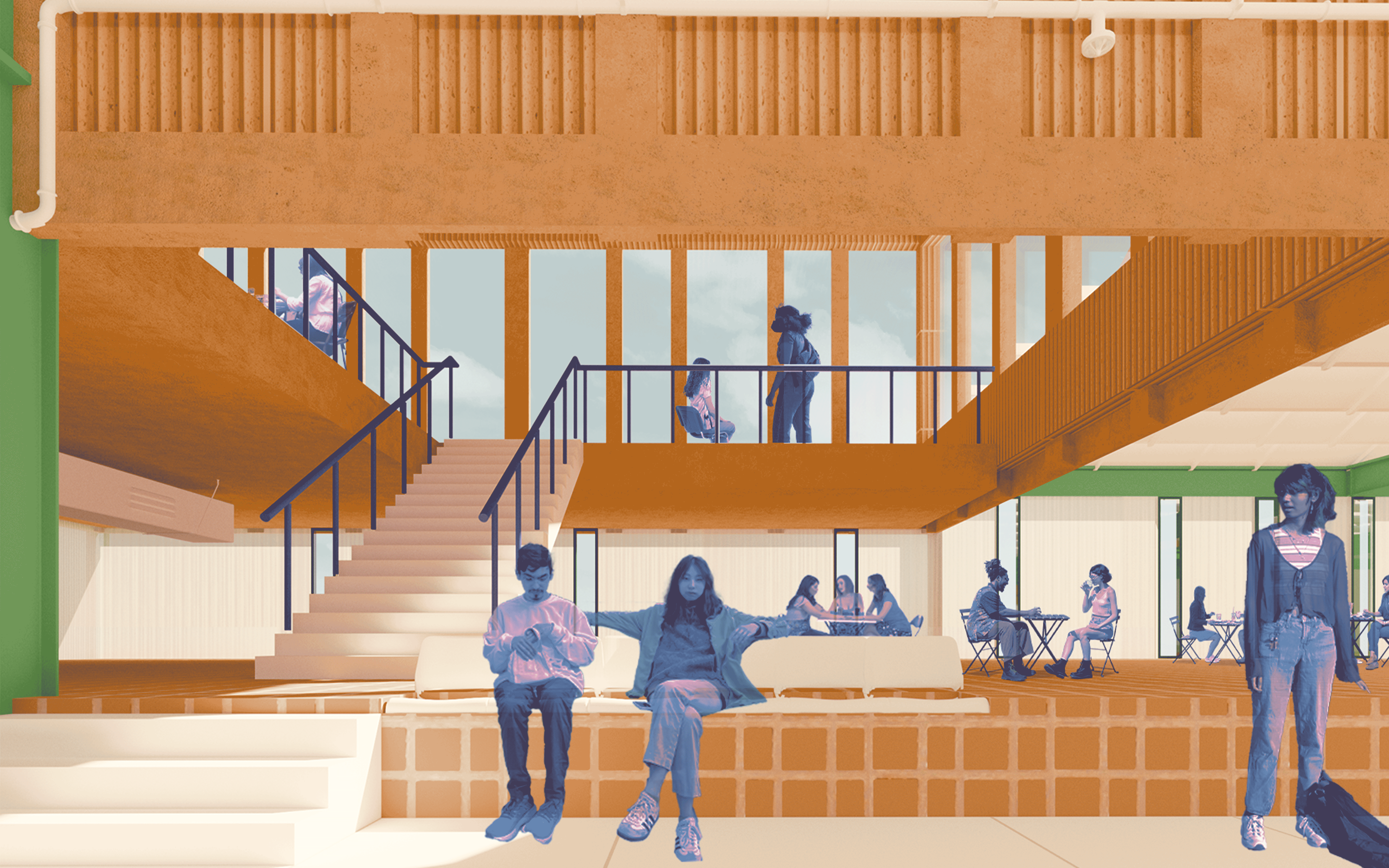


Located in Arverne, Queens on the Rockaway Peninsula, this community center responds to the frequently flooding site. Programs were plugged into a grid derived from the overarching grid of the site, using the elevated subway columns in one direction and the repeating houses on the other. The center also doubles as an emergency shelter, with all necessary programming built above flood levels. The community center would be built in relation to RISE (Rockaway Initiative for Sustainability and Equity) an existing community group located at the site.
The experiential sequence of the building begins with large masses and open space, directing you from one side to the other. As you enter the building you rise up into the second floor, or interstitial zone. This area is visually defined by the grid and is meant to be inward-looking. The exterior glazing is translucent rather than transparent. As you go further into specific programs, you rise higher and the view opens up around you.
The translucent facade of the building allows it to act as a beacon at night, introducing light, comfort, and security to a site that was dark. The center would be easily visible from the surrounding streets and elevated subway, designating is as a landmark within the community.
The building grid is reinforced by the structural grid of the building. The steel columns and beams are visible on the exterior and is able to exist outside of the building. The boxes of programs plug into the infrastructural grid which allows for the structure and programs to easily grow and change as the community requires.
The experiential sequence of the building begins with large masses and open space, directing you from one side to the other. As you enter the building you rise up into the second floor, or interstitial zone. This area is visually defined by the grid and is meant to be inward-looking. The exterior glazing is translucent rather than transparent. As you go further into specific programs, you rise higher and the view opens up around you.
The translucent facade of the building allows it to act as a beacon at night, introducing light, comfort, and security to a site that was dark. The center would be easily visible from the surrounding streets and elevated subway, designating is as a landmark within the community.
The building grid is reinforced by the structural grid of the building. The steel columns and beams are visible on the exterior and is able to exist outside of the building. The boxes of programs plug into the infrastructural grid which allows for the structure and programs to easily grow and change as the community requires.





